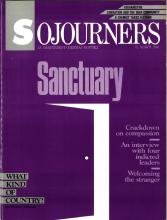This month a new phase of the nuclear arms race will be launched. The site for this event will not be a top-secret laboratory in California or a missile-testing range on some remote Pacific island. It will happen around a conference table in Geneva, Switzerland, when the United States and the Soviet Union commence a new round of arms control talks.
Instead of plutonium, hardened silos, and submarines, the tools of battle in Geneva will be bluff and bluster, public deception, and, perhaps the most deadly nuclear weapon, protracted stalling. For the citizens of both superpowers, the results will likely be the same.
For some months now, a debate about arms control has raged within the Reagan administration between the "hard-liners," mostly in the Department of Defense, and the "pragmatists" in the State Department. The hard-liners want the United States to dispense with the illusion of arms control, build whatever kinds of weapons it wishes in whatever numbers it can, and let the Russians make of it what they will.
The pragmatists, on the other hand, recognize that arms control talks represent the only politically viable route for attaining their nuclear goals which, when examined, turn out to be virtually identical to those of the hard-liners. They want to build the MX missile, complete the Euromissile deployment, fill the oceans with Trident submarines, test and eventually deploy a sophisticated, new anti-satellite weapon, and move unhindered toward the development of Star Wars machinery.
Read the Full Article

